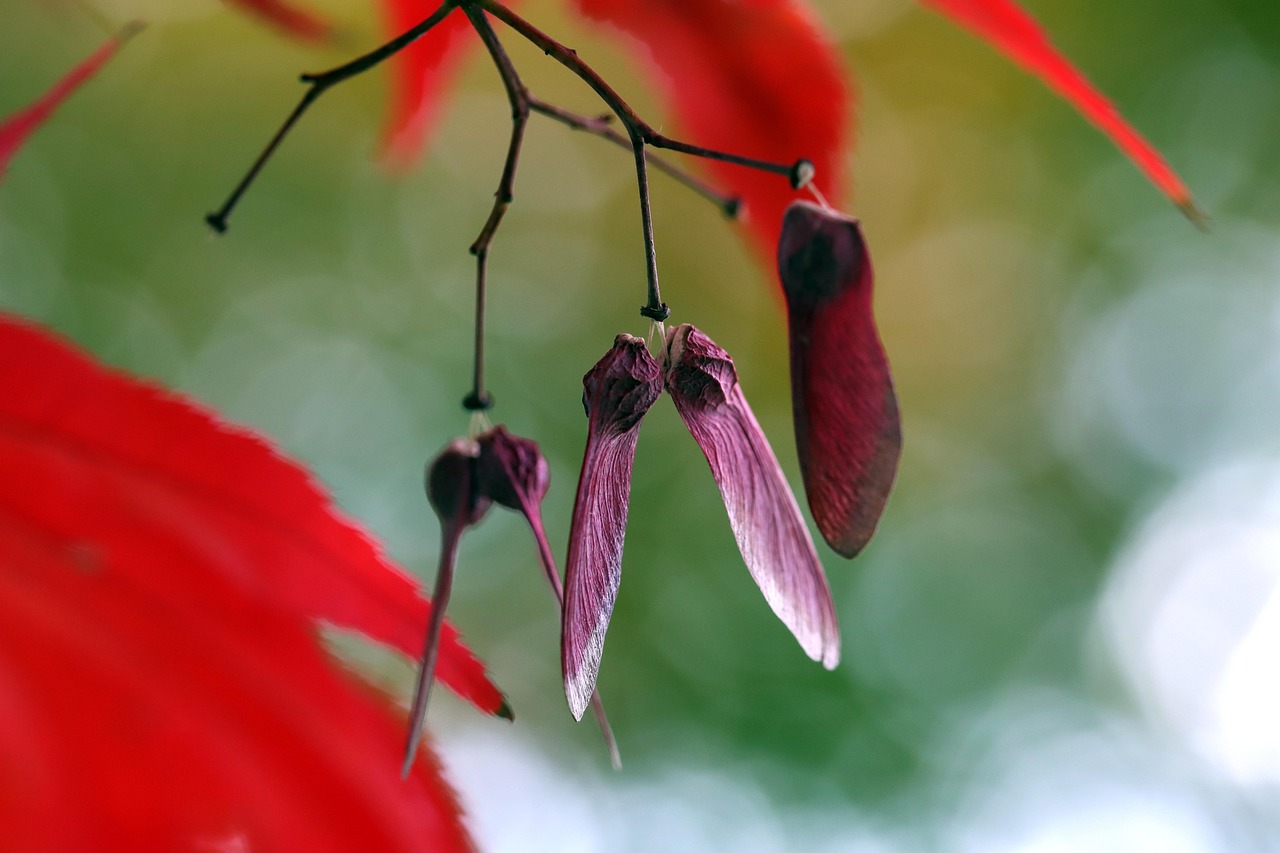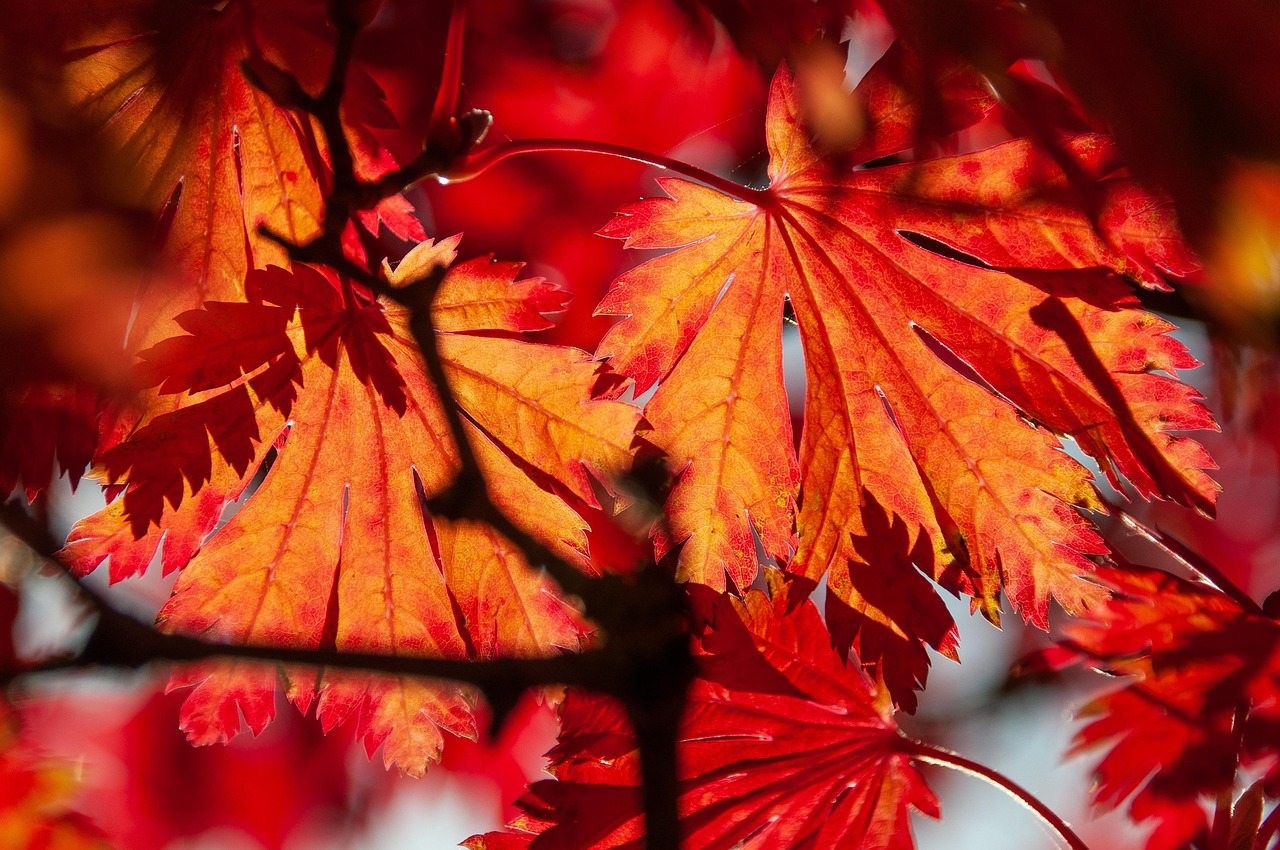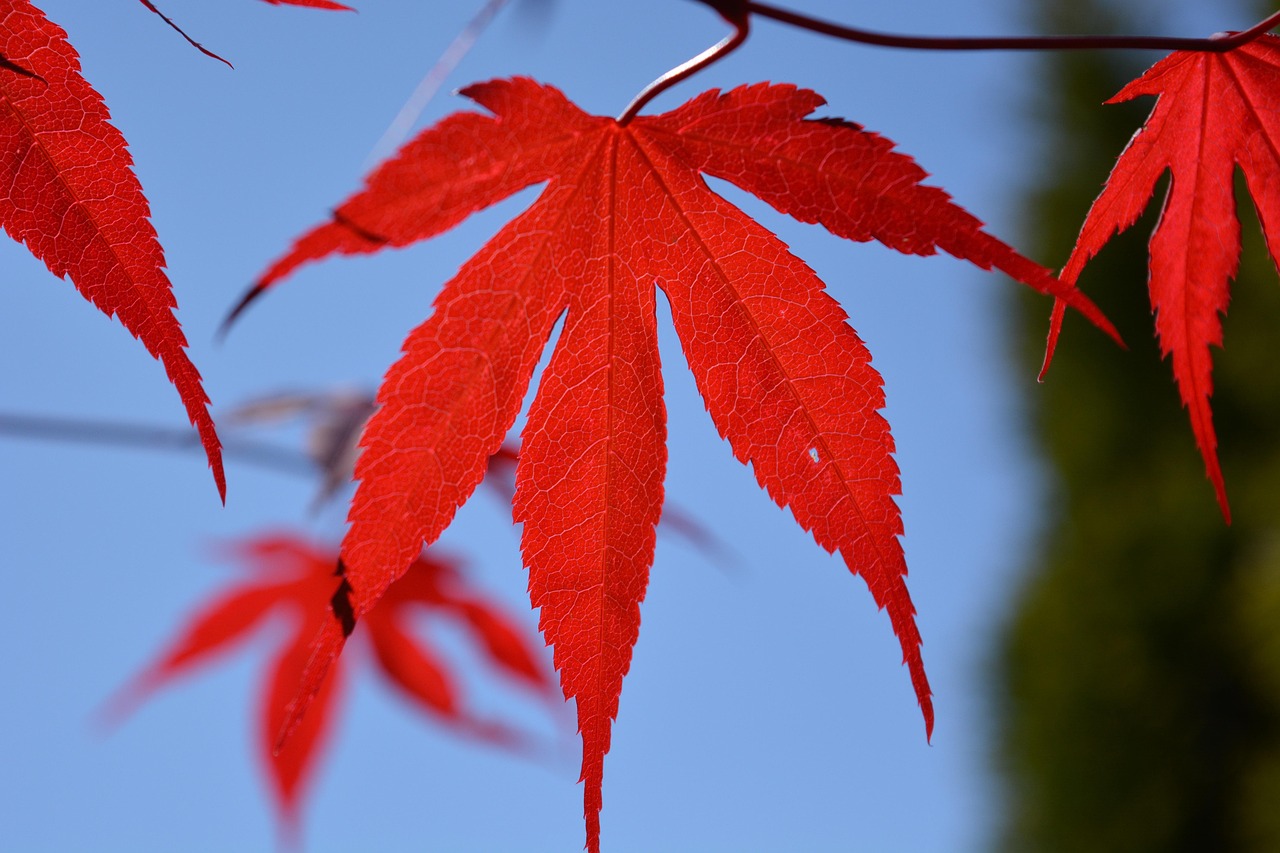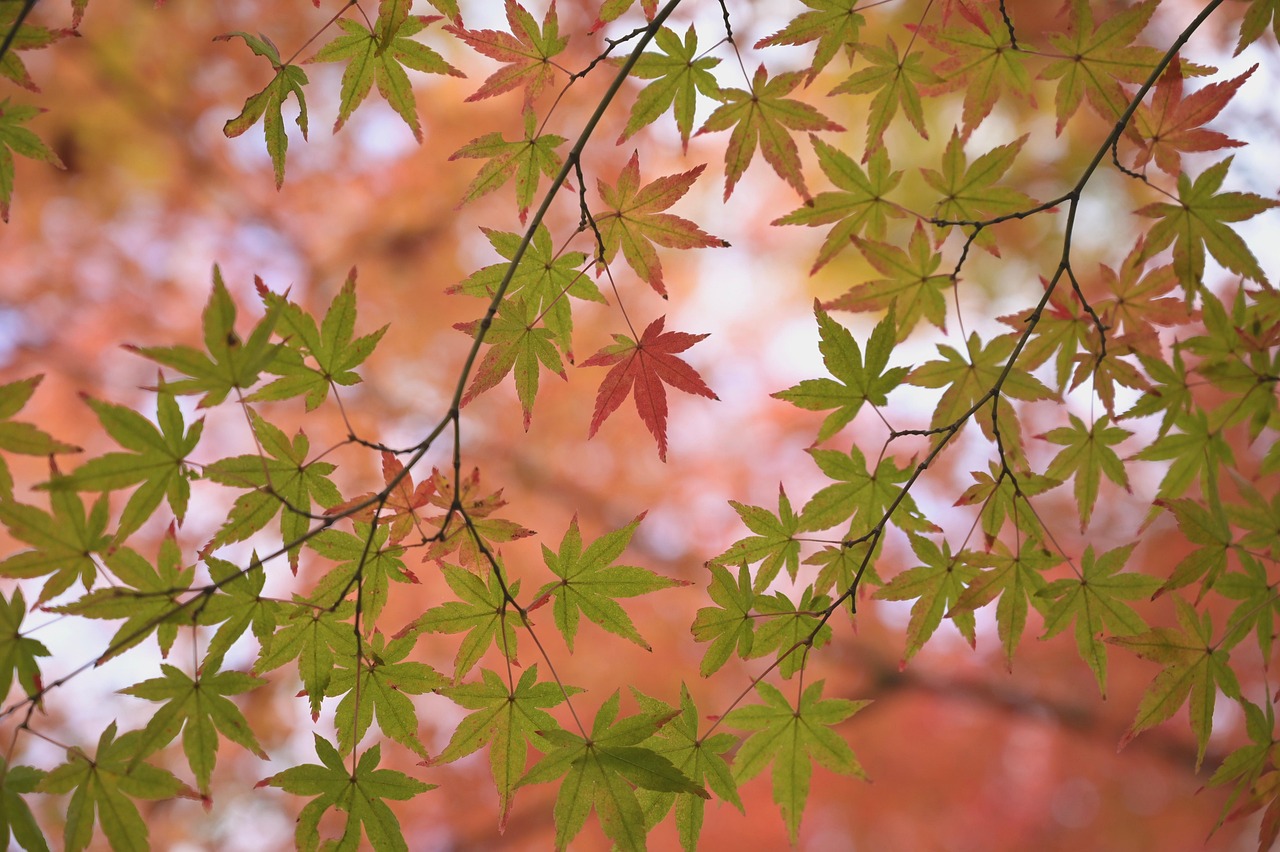Pruning maple trees at optimal times and with proper techniques enhances autumn foliage vibrancy and tree health. Focus on thinning, shape, and disease removal during late winter or early spring, using the right tools. Proper pruning boosts sunlight exposure and airflow, resulting in more vivid fall colors and a healthier landscape feature.
Maple trees are renowned for their stunning autumn display, transforming landscapes with vibrant shades of red, orange, and yellow. However, achieving these brilliant colors requires more than just waiting for the season to change. Pruning is an essential maintenance practice that can greatly influence the health of the tree and the intensity of its fall colors.

Understanding the biology of maple trees is crucial for effective pruning. These trees thrive in well-drained soil and prefer full sunlight. Pruning can help to remove dead or diseased branches, allowing the tree to focus its energy on healthy growth. This not only improves the overall vitality of the tree but also enhances its ability to produce colorful foliage in autumn.
Benefits of Pruning Maple Trees
There are several key benefits to pruning maple trees, particularly when it comes to promoting vibrant autumn colors:
- Improved Air Circulation: Pruning removes crowded branches that can restrict airflow. Better air circulation reduces the chance of fungal diseases that can affect leaf health.
- Increased Sunlight Exposure: By thinning out branches, more sunlight reaches the inner leaves. Sunlight is essential for photosynthesis, which helps produce the sugars needed for vibrant leaf colors.
- Enhanced Growth: Removing dead or weak branches allows the tree to allocate resources more efficiently, promoting healthy new growth that will contribute to color intensity in the fall.
- Shape and Structure: Pruning helps maintain a desirable shape and structure. A well-shaped tree not only looks better but also has leaves that are more evenly exposed to sunlight.
While pruning offers numerous benefits, timing and technique are vital components for success. The best time to prune maple trees is during late winter or early spring before new growth begins. This timing helps minimize sap loss and reduces stress on the tree. It is also important to use proper tools and techniques to ensure clean cuts and minimize damage.

Pro-Tips and Common Mistakes to Avoid
- When I first started pruning, I learned that removing too many branches at once stressed the tree. Now, I prune gradually and selectively to avoid overwhelming it.
- Initially, I didn’t sterilize my tools, which led to infections. Now, I always disinfect my pruners and saws before and after pruning to keep diseases at bay.
- At first, I pruned in late summer, but I found that mid to late winter is best for minimizing sap loss and stress. Pruning during the wrong season can hinder recovery.
- I used to make rough cuts that left stubs, but I’ve since learned to make clean cuts just outside the branch collar. This promotes faster healing and reduces disease entry points.
- When I over-pruned, I noticed dull autumn colors. Now, I prune conservatively to retain as much foliage as possible for a vibrant display.
- It’s tempting to make heavy cuts on older, overgrown trees, but I now focus on light, incremental pruning to avoid shocking the tree and damaging its structure.
- I used to forget about small, crossing branches, which caused issues later. Now, I routinely remove weak, crossing, or dead branches to improve overall health and appearance.
- Not paying attention to environmental conditions, I pruned during a drought, which stressed the tree. I now ensure proper watering before and after pruning, especially during dry periods.
Tools Required for Pruning
Having the right tools is essential for effective pruning. Below is a list of tools commonly used for pruning maple trees:
- Hand Pruners: Ideal for cutting small branches and twigs up to ¾ inch thick.
- Loppers: Suitable for larger branches, typically up to 2 inches thick, providing leverage for clean cuts.
- Saws: For branches thicker than 2 inches, a pruning saw or chainsaw may be necessary.
- Gloves: Protect your hands from cuts and scrapes while handling branches.
- Ladder: A sturdy ladder may be needed to reach higher branches safely.
When pruning, make sure to sterilize tools before use. This helps prevent the spread of diseases between trees. Simple solutions like rubbing alcohol or bleach can effectively sanitize cutting tools.
Pruning Techniques
Effective pruning techniques are essential for achieving desired results. Here are some techniques that are particularly beneficial for maple trees:

- Thinning: This technique involves selectively removing branches throughout the tree to improve light penetration and airflow.
- Heading Back: Cutting back a branch to a bud or a smaller branch can encourage new growth and reshape the tree.
- Crown Raising: This involves removing lower branches to lift the crown of the tree, enhancing its shape and allowing more light to reach lower foliage.
- Crown Reduction: Reducing the height or spread of a tree while maintaining its natural shape can be beneficial for older trees that may have become too large.
Each technique serves a specific purpose and should be applied based on the needs of the tree and desired outcomes. Understanding how each method affects growth will help ensure healthier trees with more vibrant autumn colors.
Common Mistakes in Maple Tree Pruning
While pruning can enhance a maple tree’s health and beauty, there are common mistakes that should be avoided:
- Over-Pruning: Removing too much foliage can stress the tree and lead to poor growth.
- Poor Timing: Late summer or fall pruning can stimulate new growth that won’t have time to harden off before winter.
- Incorrect Cuts: Making improper cuts can lead to disease entry points and structural issues.
Avoiding these mistakes requires careful planning and understanding of proper techniques. With practice, anyone can master maple tree pruning to achieve stunning autumn colors year after year.

| Pruning Technique | Description | Benefits |
|---|---|---|
| Thinning | Selective removal of branches | Improves light and airflow |
| Heading Back | Cuts back a branch to a bud | Encourages new growth |
| Crown Raising | Removing lower branches | Lifts crown for better shape |
| Crown Reduction | Trimming height or spread | Keeps older trees healthy |
This section provided insight into why pruning maple trees is essential for enhancing their stunning autumn colors. Through proper knowledge of timing, tools, techniques, and common mistakes, you can ensure your maple trees flourish with vibrant hues each fall.
Understanding Maple Tree Varieties
Before delving deeper into the intricacies of pruning maple trees, it is essential to understand the various species of maple trees. Different types of maples exhibit unique growth habits, leaf shapes, and colors, which can affect how they should be pruned. Here are some popular varieties:
- Red Maple (Acer rubrum): Known for its vibrant red autumn foliage, this tree grows rapidly and adapts well to various soil conditions.
- Sugar Maple (Acer saccharum): Famous for its sweet sap used in syrup production, sugar maples offer stunning yellow and orange colors in fall.
- Japanese Maple (Acer palmatum): Often grown for its ornamental value, this small tree has delicate leaves that turn brilliant shades in autumn.
- Silver Maple (Acer saccharinum): This fast-growing species features silvery undersides to its leaves and provides a lovely yellow color in fall.
Recognizing the specific characteristics of each type of maple will help you tailor your pruning strategy effectively. Each variety may require different approaches based on their growth patterns and size.
Pruning Techniques for Different Maple Varieties
The techniques applied during pruning can vary based on the specific species of maple tree. Here’s a brief overview of recommended practices for each variety:
| Maple Variety | Recommended Pruning Techniques | Key Considerations |
|---|---|---|
| Red Maple | Thinning and heading back | Prune in late winter to avoid sap loss |
| Sugar Maple | Thinning and crown raising | Avoid heavy pruning; focus on removing deadwood |
| Japanese Maple | Crown reduction and selective branch removal | Prune carefully to maintain its natural shape |
| Silver Maple | Thinning and heading back | Watch for weak branches due to rapid growth |
The Science Behind Autumn Colors
To appreciate how pruning affects autumn colors, it is crucial to understand the science behind leaf coloration. The vibrant hues seen in autumn are primarily due to the presence of pigments in the leaves:
- Chlorophyll: The green pigment responsible for photosynthesis. As days shorten and temperatures drop, chlorophyll breaks down, revealing other pigments.
- Carotenoids: These pigments produce yellow and orange colors. They are always present but masked by chlorophyll during the growing season.
- Anthocyanins: These pigments give red and purple colors. They develop in response to certain environmental conditions, such as bright sunlight and cool nights.
The balance between these pigments determines the intensity and variety of colors displayed in autumn. Pruning can influence this balance by promoting healthy leaf growth and ensuring that sunlight reaches more parts of the tree.
Environmental Factors Affecting Autumn Colors
Several environmental factors play a significant role in determining the vibrancy of autumn colors:
- Temperature: Cool nights and warm days enhance anthocyanin production, resulting in brilliant reds.
- Soil Moisture: Adequate moisture during the growing season supports better color development. Stress from drought can lead to muted colors.
- Sunlight: Trees that receive ample sunlight tend to produce more vibrant colors. Pruning assists by allowing sunlight to reach more leaves.
- Pest and Disease Management: Healthy trees free from pests and diseases are more likely to exhibit vivid autumn colors.
The Role of Fertilization in Enhancing Fall Colors
Apart from pruning, fertilization can also play a critical role in promoting vibrant autumn colors in maple trees. Here are some considerations for fertilizing your maple trees:
- Soil Testing: Conduct a soil test to determine nutrient deficiencies before applying any fertilizers. This ensures that you provide the right nutrients.
- Nitrogen Levels: Avoid excessive nitrogen fertilization late in the growing season, as it can promote lush green growth rather than vibrant fall colors.
- Balanced Fertilizers: Use a balanced fertilizer that contains phosphorus and potassium, as these elements support root development and overall tree health.
- Timing: Fertilize early in the growing season or in late fall after leaf drop to support recovery and prepare for winter.
The right fertilization strategy can complement your pruning efforts, promoting healthier trees that display more brilliant autumn colors. By addressing these factors, you can create an optimal environment for your maple trees to thrive.
Pest and Disease Management for Healthy Trees
Pests and diseases can hinder the health of maple trees, negatively impacting their ability to produce vibrant autumn foliage. Common issues include:
- Aphids: These small insects suck sap from leaves, leading to discoloration and stress.
- Maple Scale: This pest attaches itself to branches, impairing nutrient flow.
- Root Rot: Caused by overwatering or poor drainage, it can severely affect tree health.
- Fungal Diseases: Conditions like leaf spot or powdery mildew can also detract from leaf quality.
Regular monitoring of your maple trees for signs of pests or diseases is crucial. Implementing integrated pest management strategies can help keep your trees healthy, ultimately enhancing their autumn display.
This section has covered various aspects of maple tree varieties, the science behind autumn colors, fertilization strategies, and pest management. Understanding these elements will aid you in your efforts to create stunning fall displays through thoughtful pruning and care.
Seasonal Care for Maple Trees
Caring for maple trees extends beyond pruning and addressing pests or diseases. Seasonal care is vital to ensure the trees remain healthy and vibrant throughout the year. Each season presents unique challenges and opportunities for maintaining the health and beauty of your maple trees.
Spring Care
Spring marks a time of renewal and growth for maple trees. Here are key practices to consider during this season:
- Inspect for Damage: After winter, check for any damage caused by snow, ice, or freezing temperatures. Remove any broken branches to promote healthy growth.
- Pruning: As previously discussed, late winter or early spring is an ideal time for pruning before new growth starts. Focus on thinning and removing dead or diseased wood.
- Fertilization: If soil tests indicate nutrient deficiencies, apply a balanced fertilizer to support new leaf and root development.
- Mulching: Apply a layer of organic mulch around the base of the tree, helping retain moisture and suppress weeds.
Summer Care
During the summer months, maple trees require consistent care to thrive. Focus on the following tasks:
- Watering: Ensure your maple trees receive adequate water. Deep watering is essential, especially during dry spells, to promote healthy root systems.
- Pest Monitoring: Regularly inspect your trees for any signs of pests such as aphids or scale. Early intervention can prevent larger infestations.
- Weed Control: Keep the area around your maple trees free from weeds that compete for nutrients and water.
- Light Pruning: If necessary, perform light pruning during summer to remove any small branches that may be crossing or crowding the tree.
Fall Care
As autumn approaches, proper care can set the stage for a healthy winter. Consider these practices:
- Leaf Cleanup: Rake fallen leaves regularly to prevent fungal diseases that can thrive in wet conditions.
- Final Pruning: If necessary, make any last-minute pruning cuts to shape the tree before winter dormancy.
- Soil Testing: Conduct soil tests to check nutrient levels before winter. This will help you plan for spring fertilization.
- Watering: Ensure trees are adequately watered before the ground freezes. Healthy hydration supports root health over winter.
Winter Care
During winter, maple trees enter a dormant phase, but care is still important. Here are some considerations:
- Protection from Snow and Ice: If heavy snow accumulates on branches, gently remove it to prevent breakage.
- Monitoring Pests: Check for signs of overwintering pests or diseases. Address any issues promptly.
- Preventing Damage: Protect young trees by wrapping trunks with tree guards against rodents and harsh weather conditions.
The Importance of Soil Health
The health of your maple trees is closely linked to soil quality. Healthy soil promotes strong root systems and overall tree vitality. Here are factors to consider:
- Nutrient Levels: Conduct regular soil tests to assess nutrient levels. Key nutrients for maple trees include nitrogen, phosphorus, and potassium.
- Soil pH: Maple trees prefer slightly acidic soils (pH 6.0-7.0). Adjusting pH can enhance nutrient availability.
- Organic Matter: Adding organic matter such as compost can improve soil structure, water retention, and nutrient content.
- Diversity of Microorganisms: Healthy soil contains a variety of beneficial microorganisms that support nutrient cycling and disease resistance.
Improving Soil Quality
If soil quality is lacking, consider these strategies to enhance it:
- Aeration: Aerate the soil around your maple trees to improve drainage and promote root growth.
- Add Organic Matter: Regularly incorporate compost or well-rotted manure into the soil to enrich it with nutrients.
- Cover Crops: Planting cover crops in the off-season can prevent erosion and improve soil fertility when tilled back into the ground.
The Role of Mulching
Mulching is a beneficial practice that supports the health of maple trees. It helps retain moisture, suppress weeds, and regulate soil temperature. Here are some key points about mulching:
- Types of Mulch: Organic mulches such as wood chips, bark, or straw are excellent choices because they decompose over time, enriching the soil.
- Application Depth: Apply a 2-4 inch layer of mulch around the base of the tree while ensuring it does not touch the trunk to avoid rot.
- Troubleshooting Mulch Issues: Regularly check mulch layers to prevent compaction or decay that could affect root health.
This section has outlined seasonal care practices for maple trees, including specific strategies for each season, the importance of soil health, and the role of mulching in supporting healthy growth. Understanding and implementing these practices will enhance the overall vitality of your maple trees throughout the year.
Enhancing Maple Tree Aesthetics
In addition to vibrant autumn colors, properly maintained maple trees can significantly enhance the aesthetics of your landscape. A well-pruned and cared-for tree serves not only as a focal point but also as a testament to the time and effort invested in its upkeep. Here are some additional aspects to consider for enhancing the visual appeal of your maple trees:
Strategic Planting
The location of your maple tree can influence its growth, health, and visual impact. Consider the following when planting:
- Sunlight Exposure: Maple trees thrive in full sunlight. Choose a location that receives at least six hours of direct sunlight each day to promote vibrant leaf color.
- Spacing: Ensure adequate spacing between trees and other plants to prevent overcrowding, which can lead to poor air circulation and increased disease risk.
- Consider Seasonal Changes: Planting near walkways or outdoor seating areas allows for enjoyment of the beautiful fall colors while also providing shade in the summer.
Seasonal Displays
Incorporating companion plants can create a stunning seasonal display. Choose plants that bloom at different times to complement the changing colors of your maple:
- Spring Bulbs: Plant bulbs like daffodils or tulips around the base to provide color before the maple leaves emerge.
- Summer Blooms: Consider summer-blooming perennials such as coneflowers or daylilies that will add color during the growing season.
- Fall Companion Plants: Use plants with contrasting fall colors, such as asters or sedums, to create a vibrant autumn scene alongside your maple.
Landscape Design Integration
Integrating your maple tree into a broader landscape design can enhance its overall impact:
- Layered Planting: Use a tiered approach by planting smaller shrubs or flowers in front of the tree, drawing attention to its height and majesty.
- Pathways and Borders: Create pathways or borders that guide the viewer’s eye towards the tree. Consider using stones, wood chips, or decorative edging.
- Water Features: Incorporating a small pond or fountain can reflect the colors of the tree, providing a serene backdrop for its beauty.
Final Thoughts
Caring for maple trees is an ongoing commitment that yields substantial rewards, especially when it comes to enhancing their autumn colors. Through proper pruning techniques, seasonal maintenance, and thoughtful landscape integration, you can ensure that your maple trees remain healthy and vibrant throughout the year.
The beauty of maple trees lies not only in their stunning fall foliage but also in their ability to transform outdoor spaces into inviting environments. By understanding the specific needs of your maple variety and implementing seasonal care practices, you will cultivate trees that thrive and captivate with their dazzling displays.
As you embark on your journey with maple trees, remember that patience and dedication are key. Each season offers new opportunities for growth and beauty. Whether you are a seasoned gardener or just beginning, the joy of witnessing your trees flourish will be immensely rewarding. Enjoy the process, and let your maple trees become a cherished part of your landscape.
With proper care and attention, your maple trees will not only provide breathtaking autumn colors but also contribute to the overall health and beauty of your environment for many years to come.
